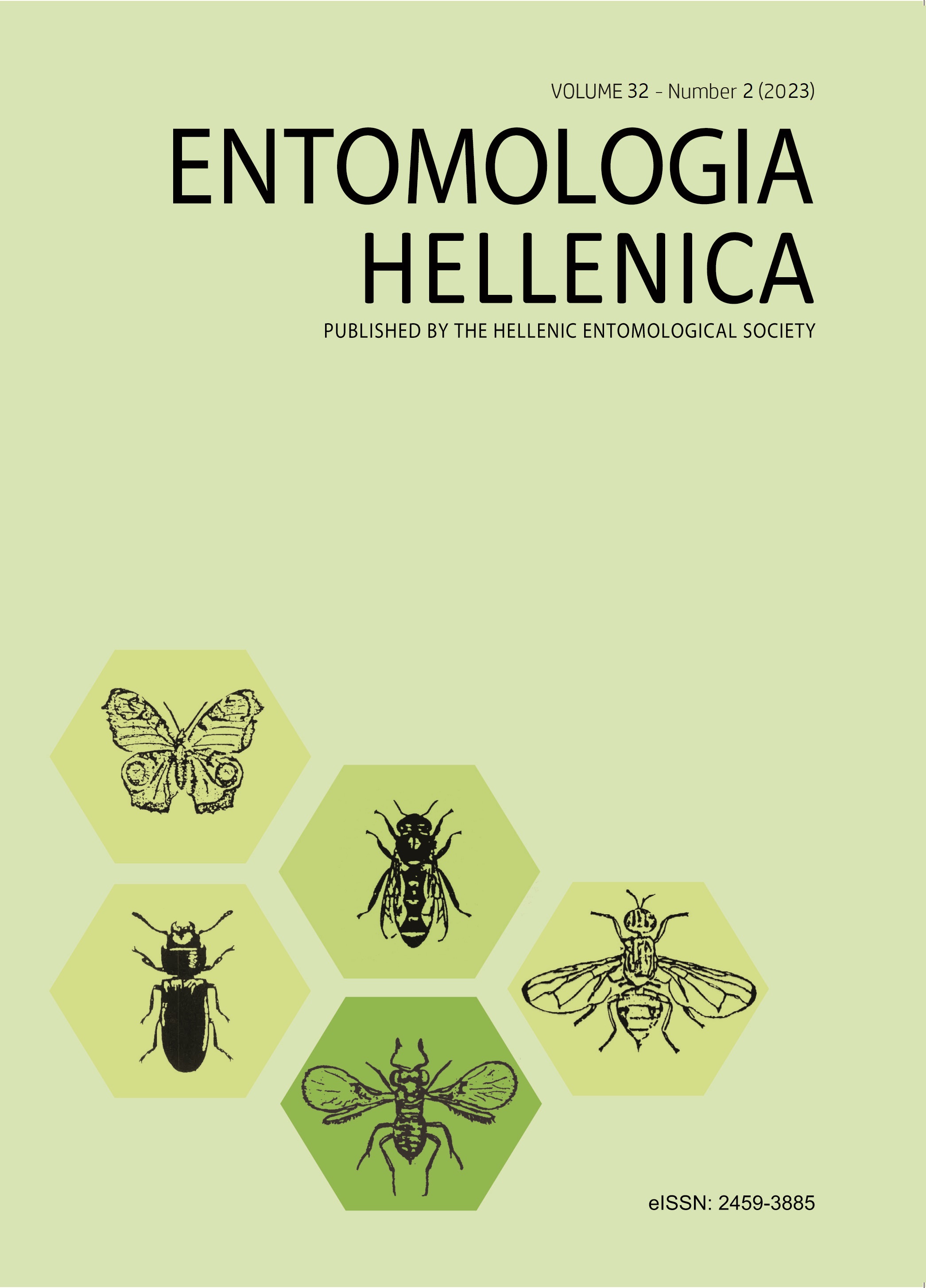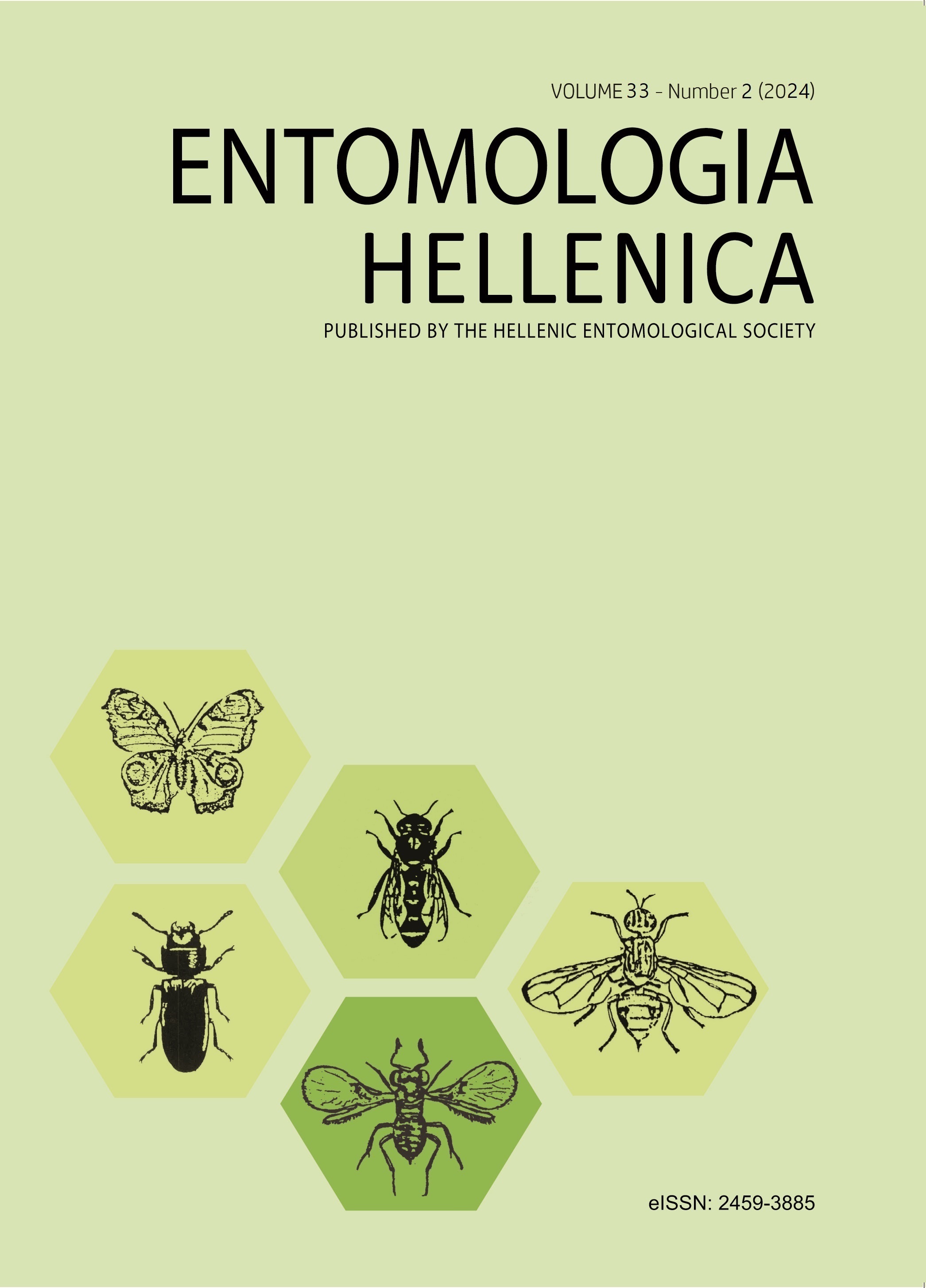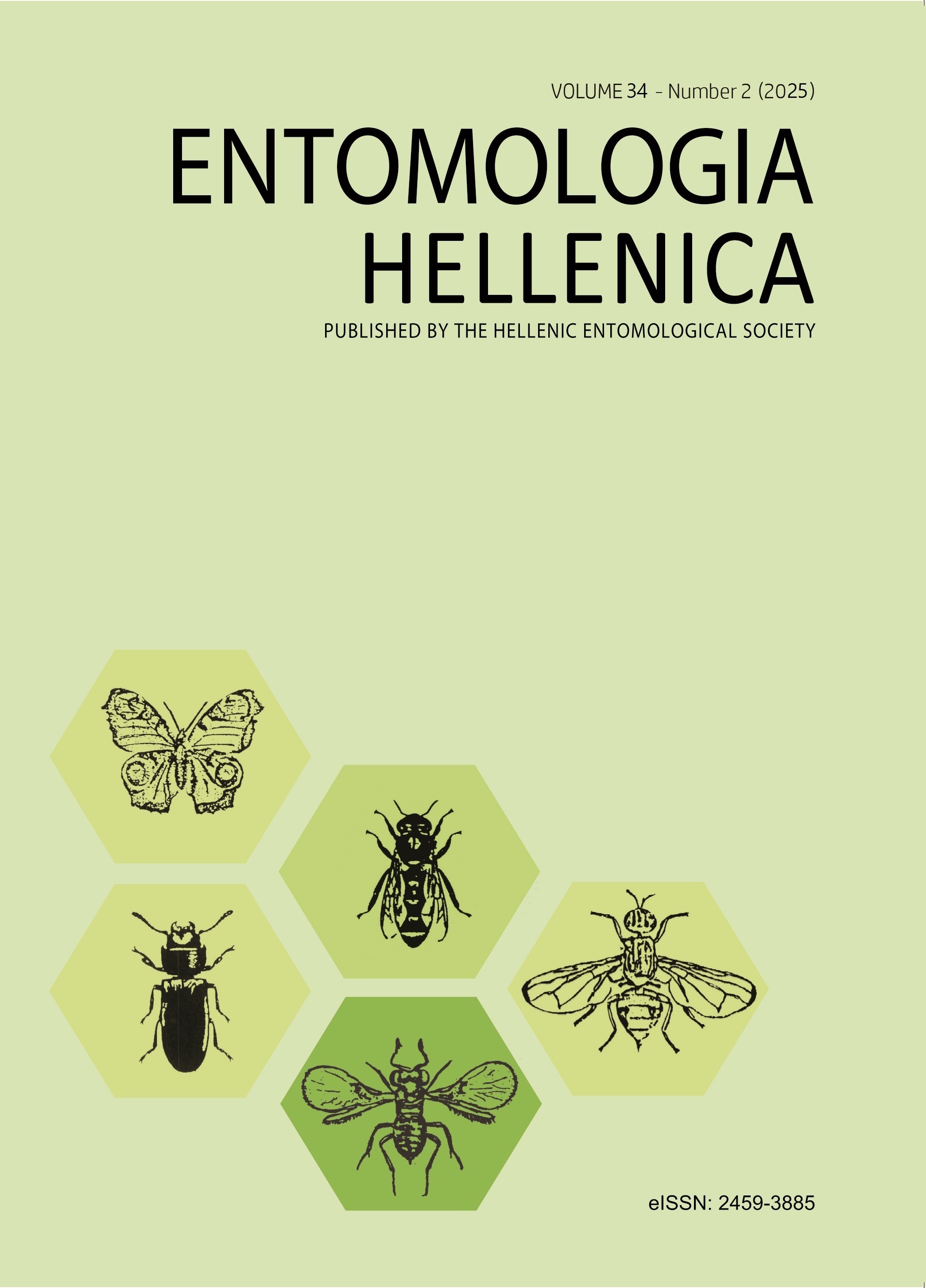Aphicidal activity screening of plant extracts from Pistacia lentiscus (Anacardiaceae)

Abstract
The excessive use of chemical pesticides has generated many problems to the human health and the environment. To reduce these problems, the use of biopesticides deriving from plants has a lot of advantages. In this context, the aim of this study was to investigate the effect of Pistacia lentiscus L. extracts on insect pests. In vitro tests of five essential oil concentrations (EOs) and five aqueous extracts were performed with respect to their efficacy against the rosy apple aphid Dysaphis plantaginea (Passerini). The obtained results revealed that the concentration of 9% was the most toxic against aphids (mortality rate of 50.77%), while the concentration 5% was the most repellent (repellency percentage -RP- 53.33%) among the examined aqueous extracts. Concerning the EOs, the 10000ppm treatment was the most efficient with a mortality rate of 71.13% and an RP of 66.67%.
Article Details
- How to Cite
-
LEBBAL, S. (2023). Aphicidal activity screening of plant extracts from Pistacia lentiscus (Anacardiaceae). ENTOMOLOGIA HELLENICA, 32(2), 12–19. https://doi.org/10.12681/eh.35414
- Section
- Articles

This work is licensed under a Creative Commons Attribution-NonCommercial-ShareAlike 4.0 International License.
Authors who publish with this journal agree to the following terms:
Authors retain copyright and grant the journal right of first publication with the work simultaneously licensed under a Creative Commons 4.0 license.
Authors are able to enter into separate, additional contractual arrangements for the non-exclusive distribution of the journal's published version of the work (e.g. post it to an institutional repository or publish it in a book), with an acknowledgement of its initial publication in this journal. Authors are permitted and encouraged to post their work online (preferably in institutional repositories or on their website) prior to and during the submission process, as it can lead to productive exchanges, as well as earlier and greater citation of published work.




